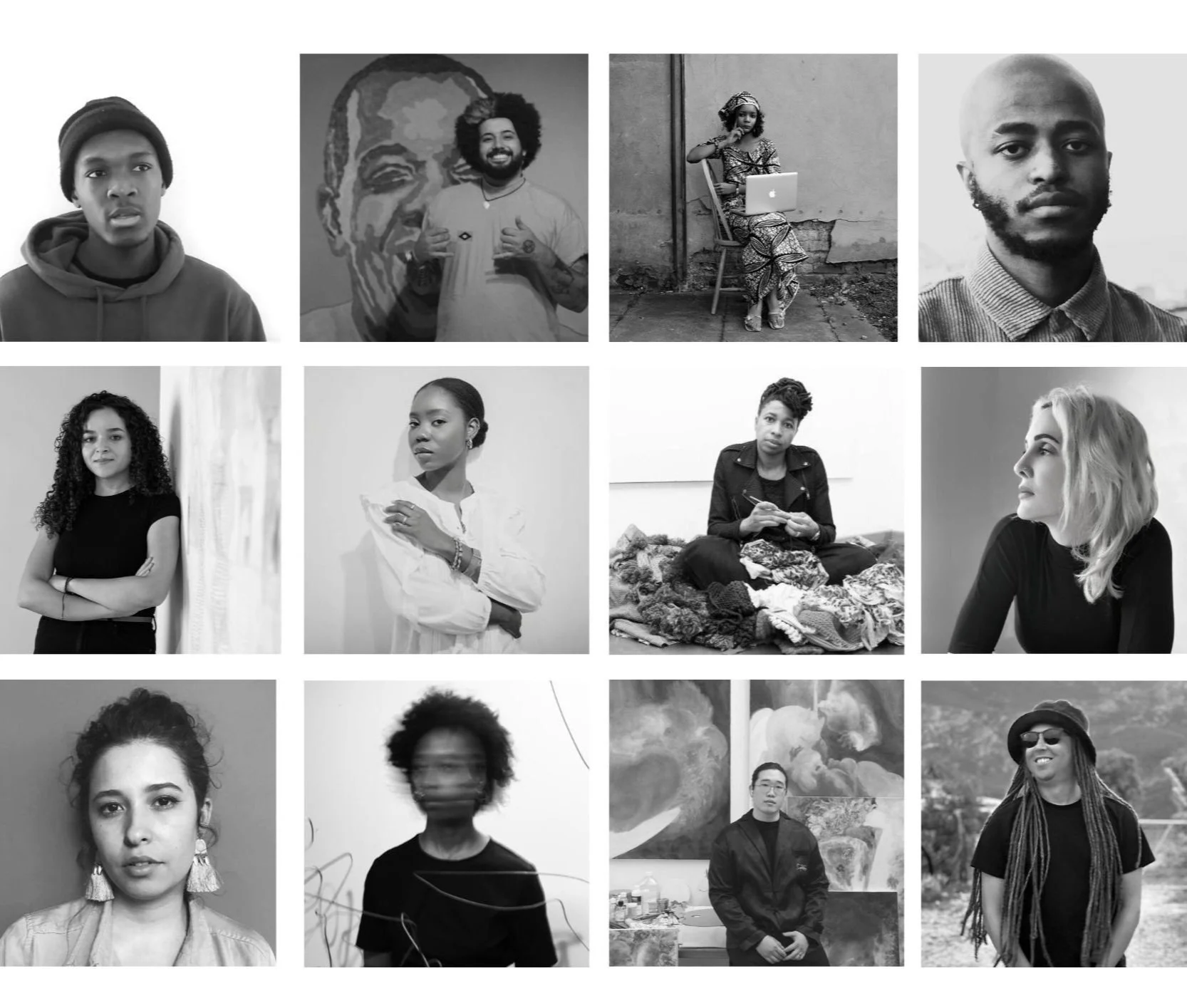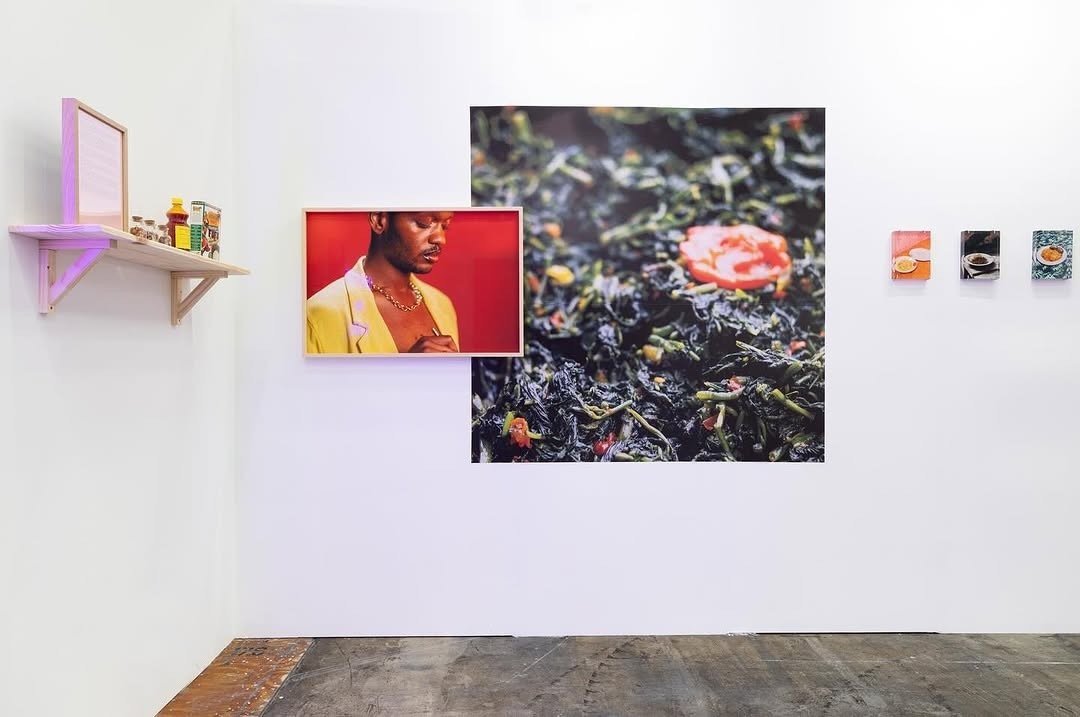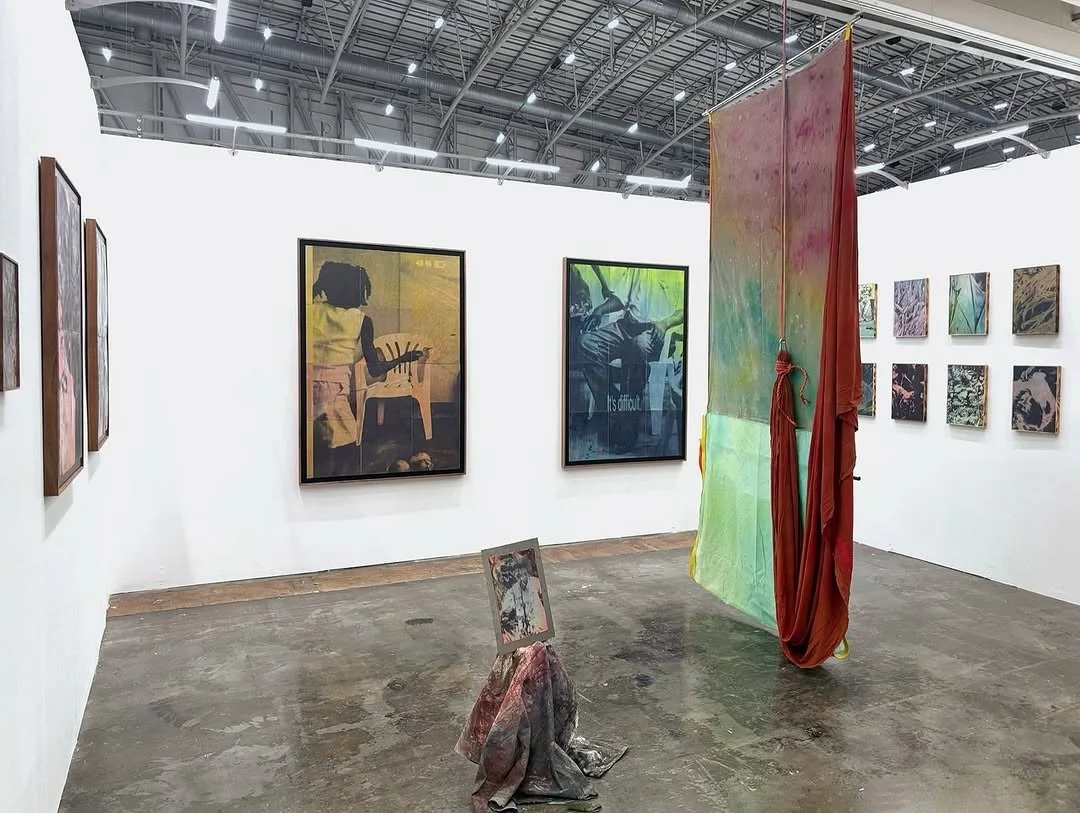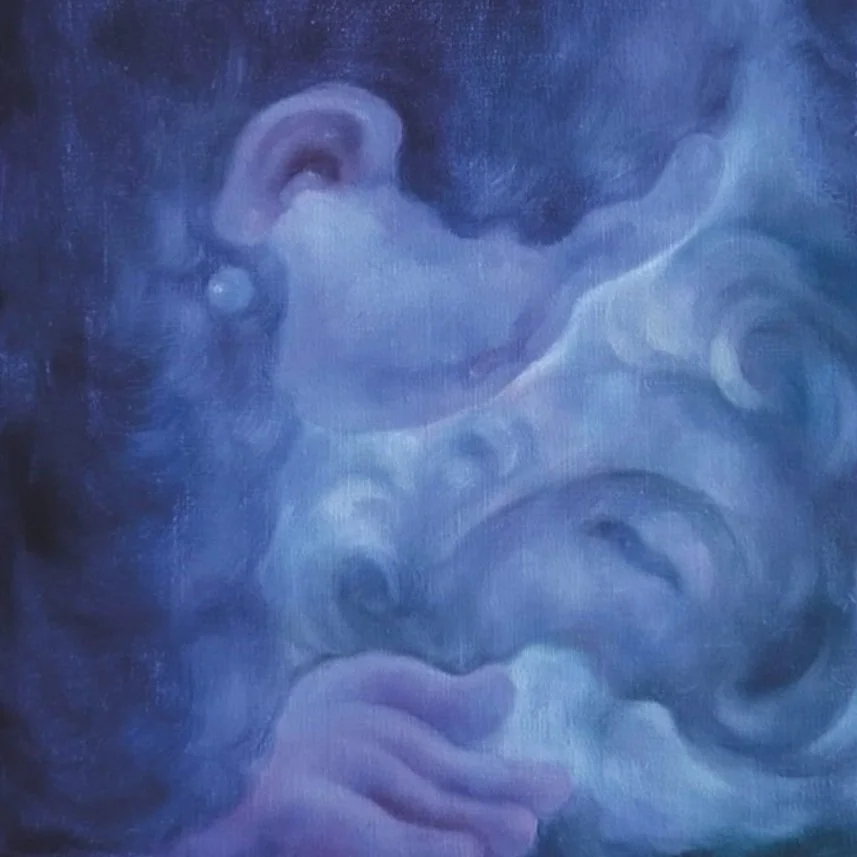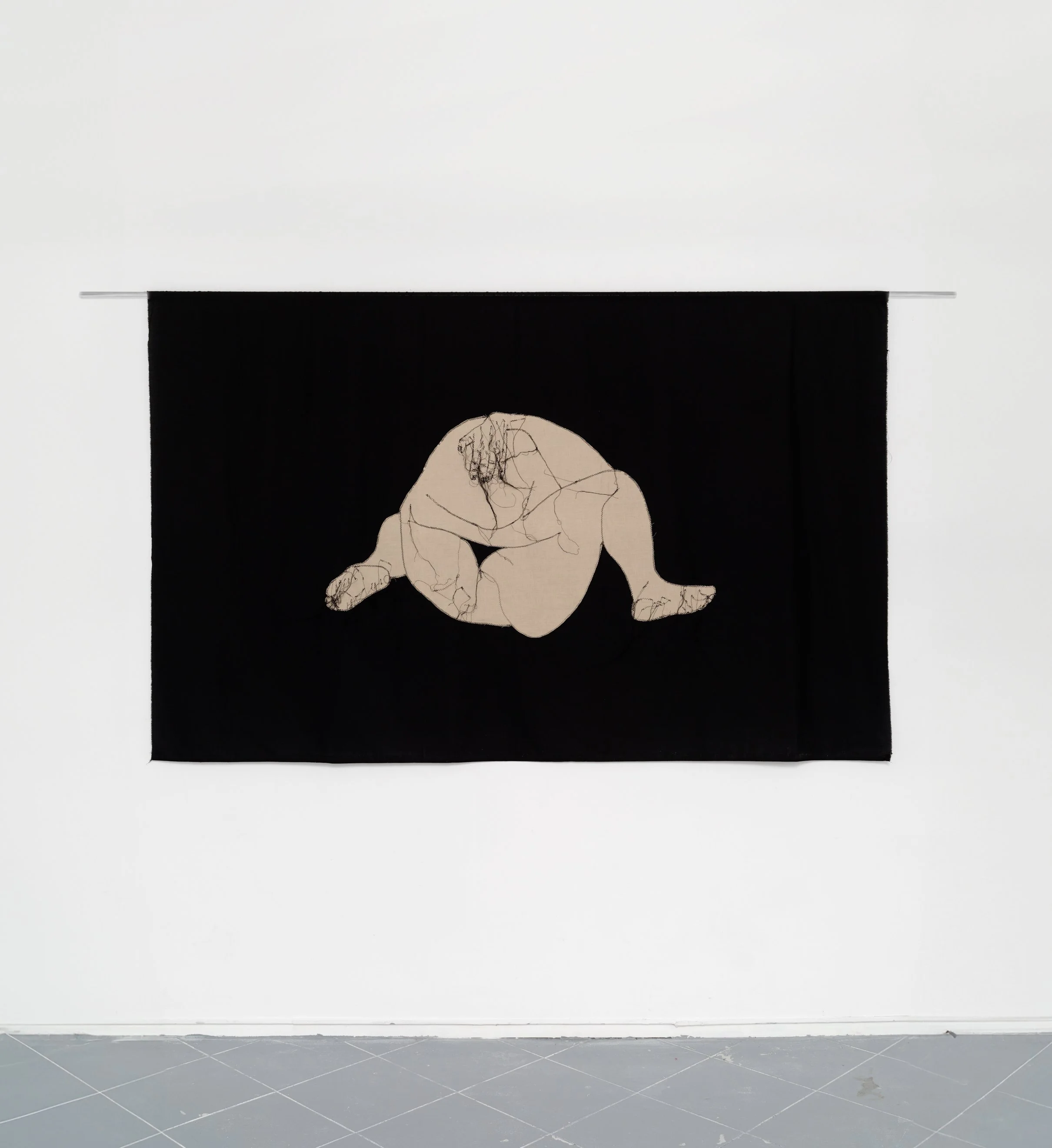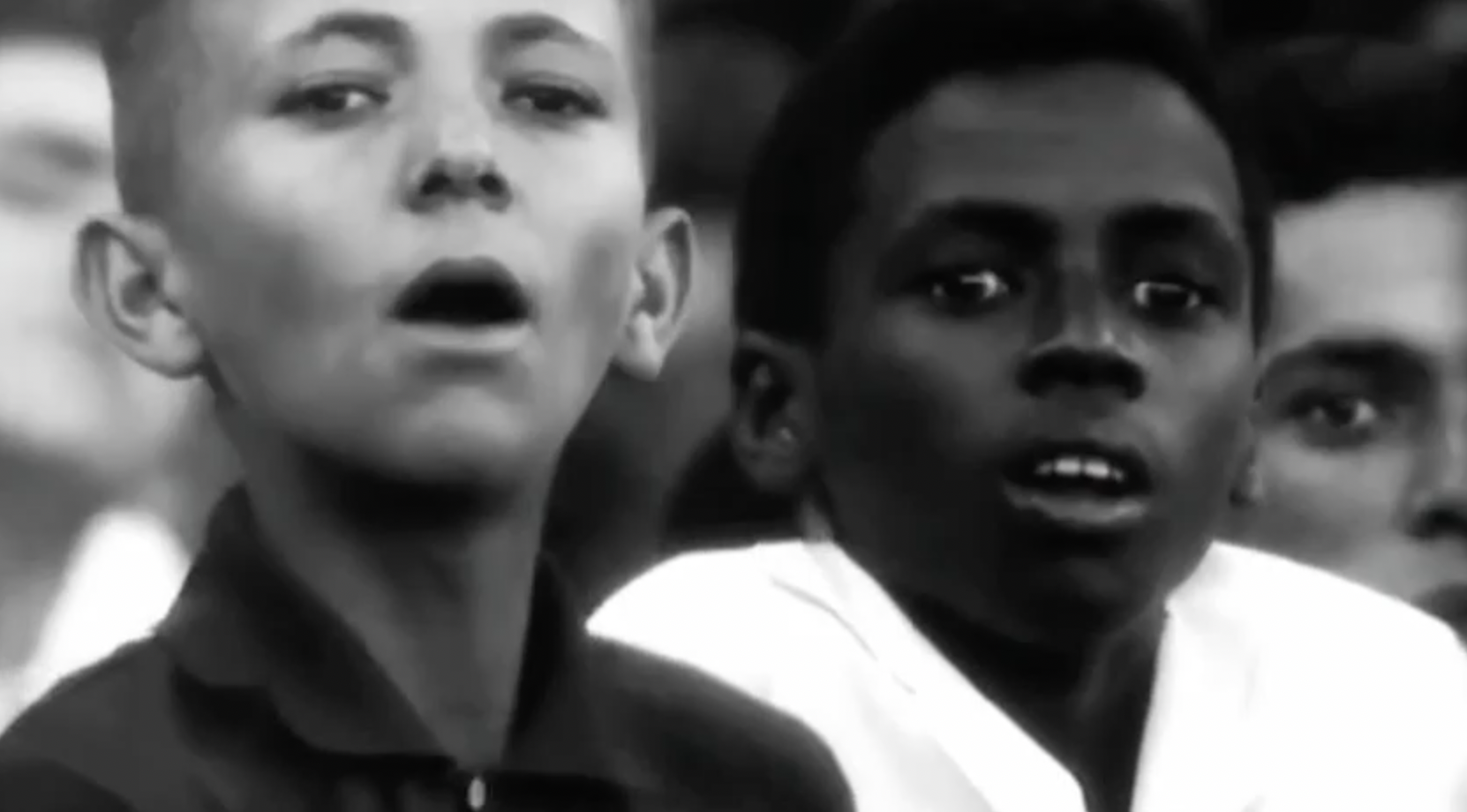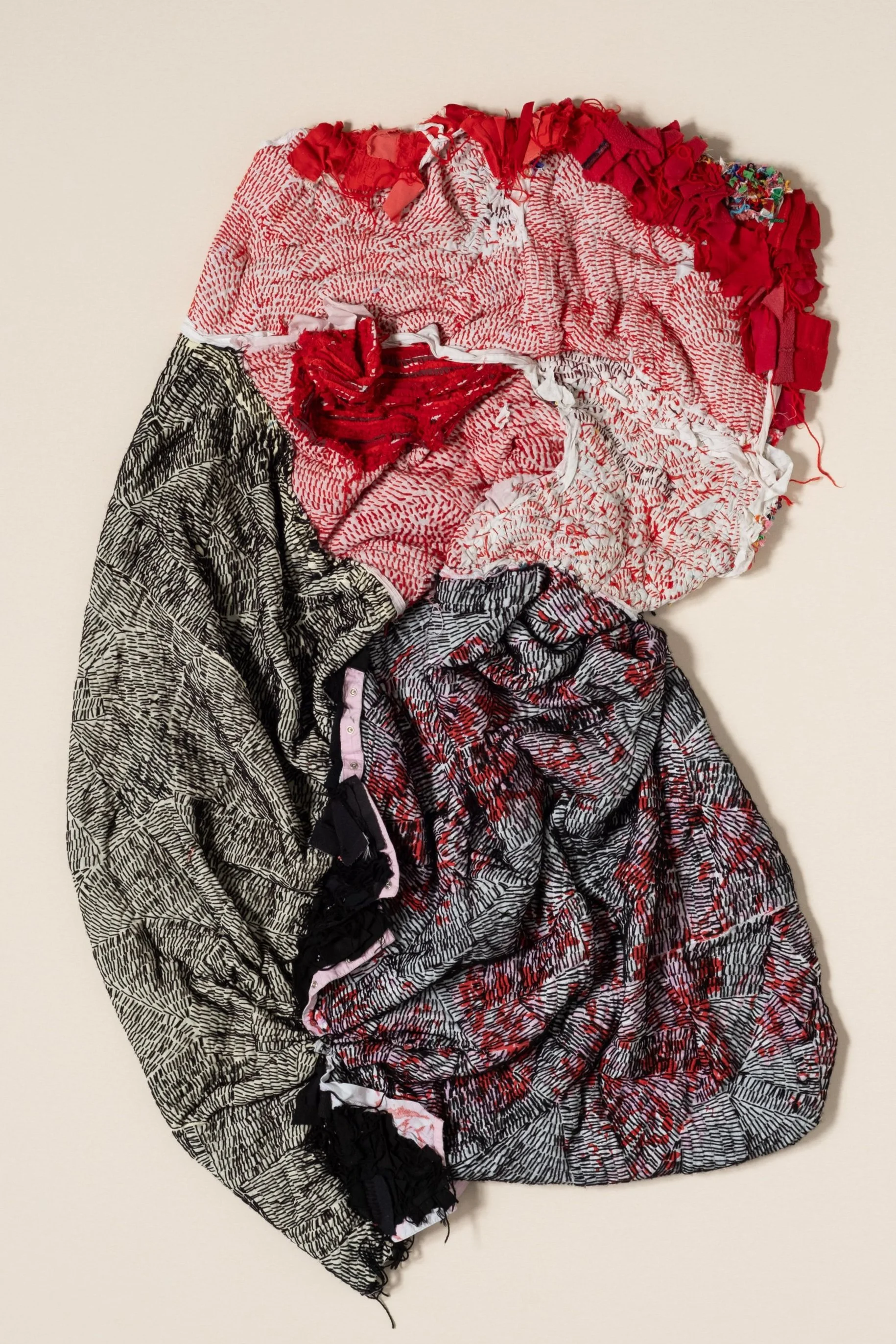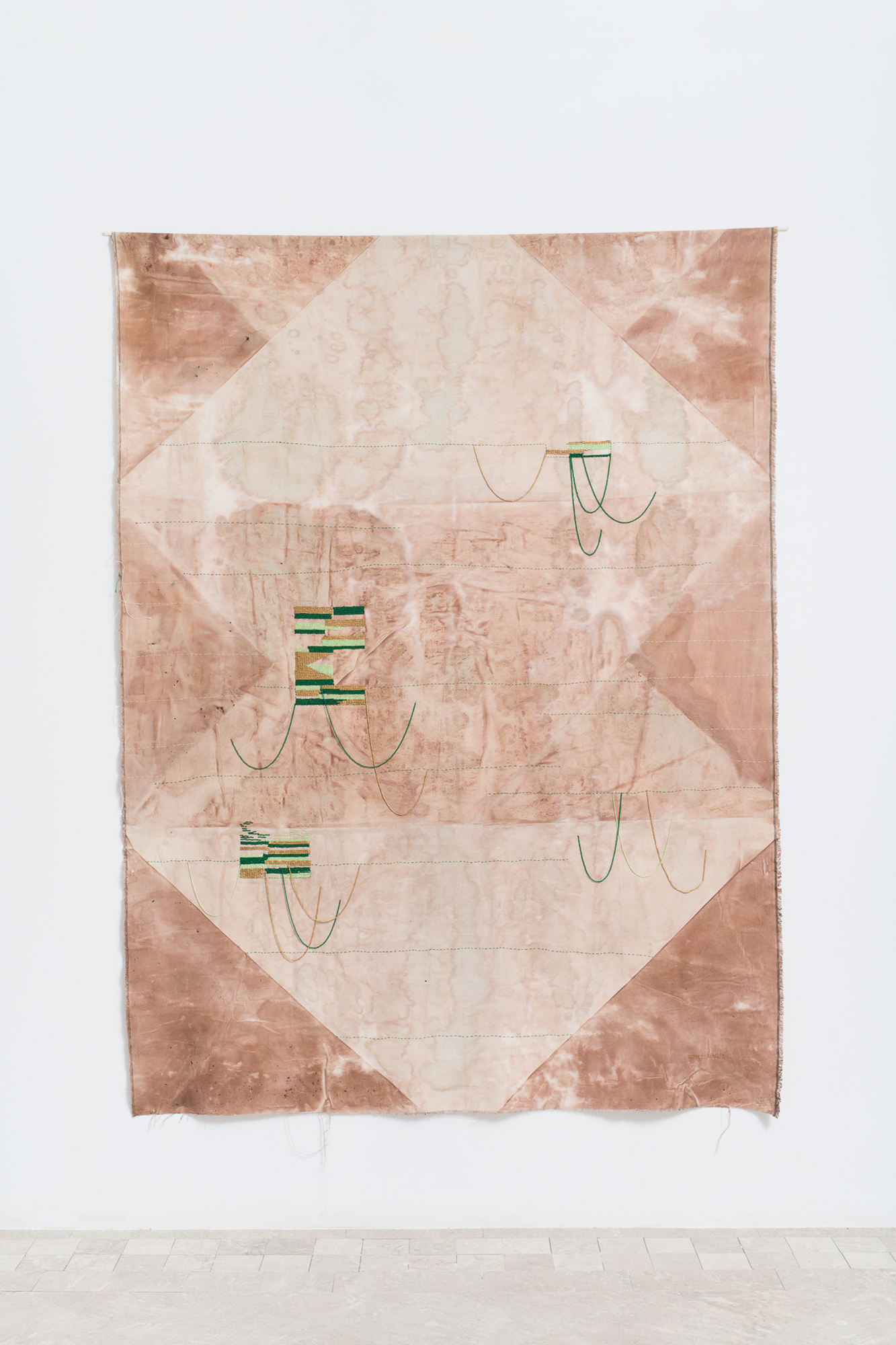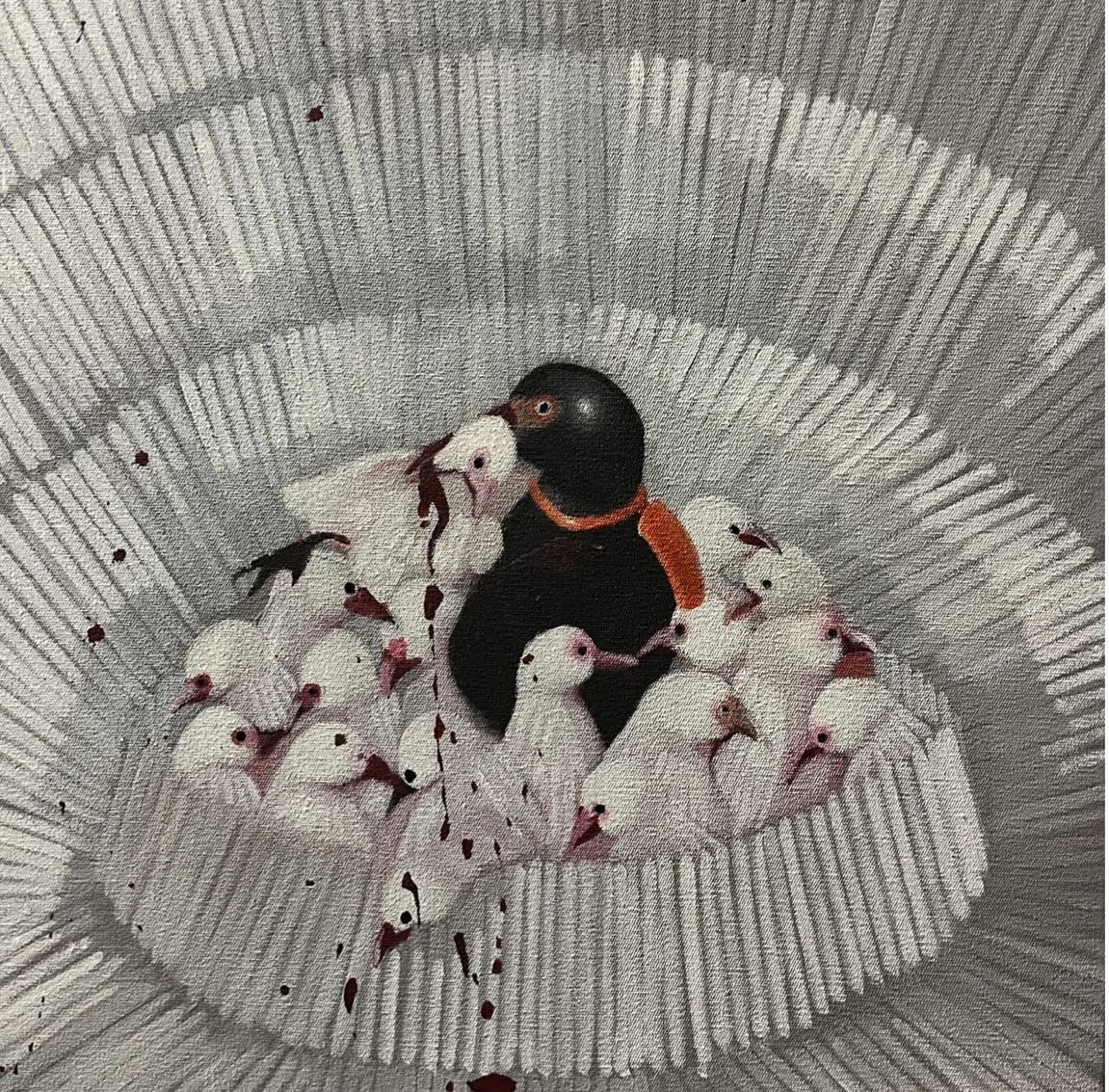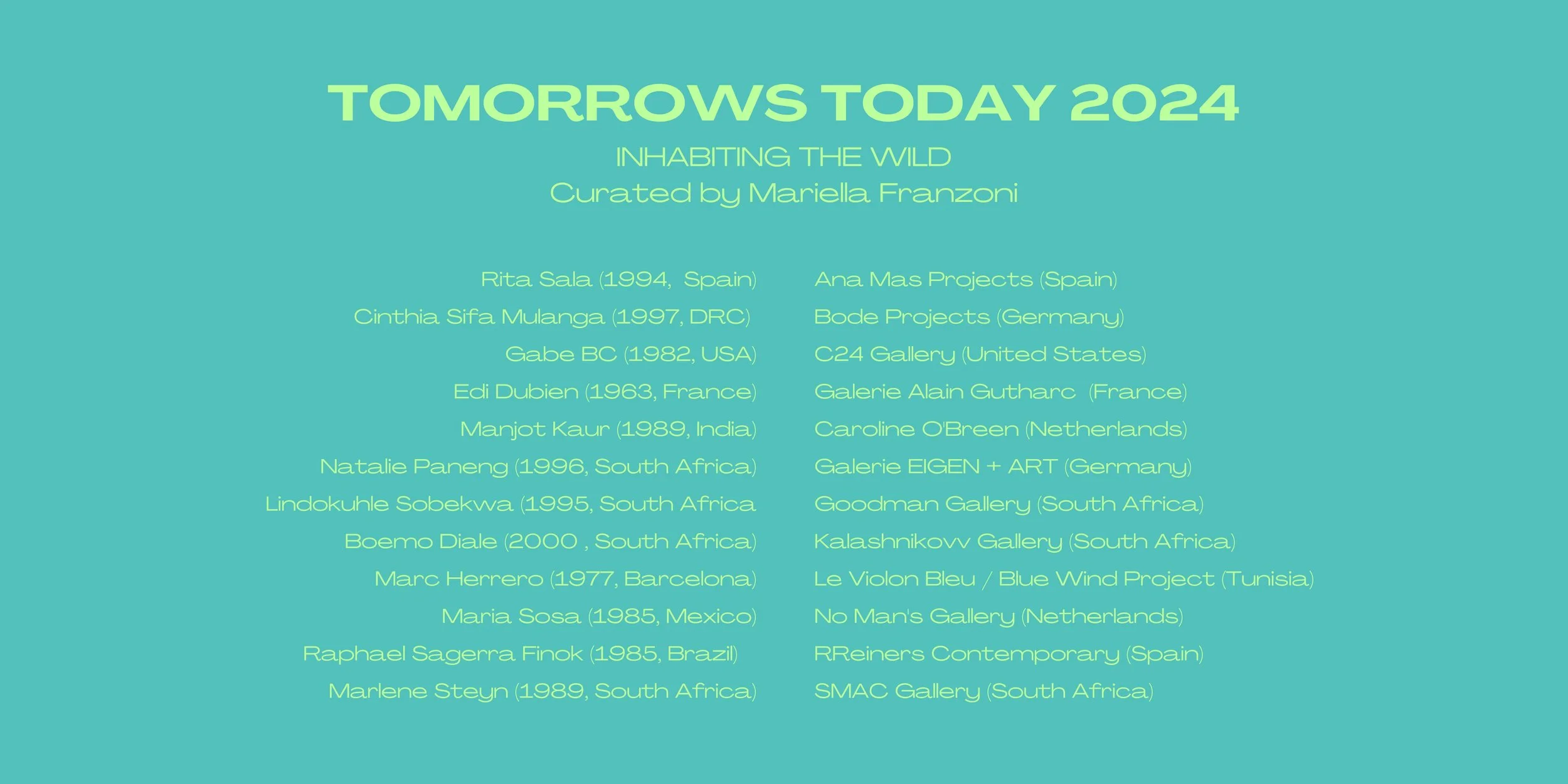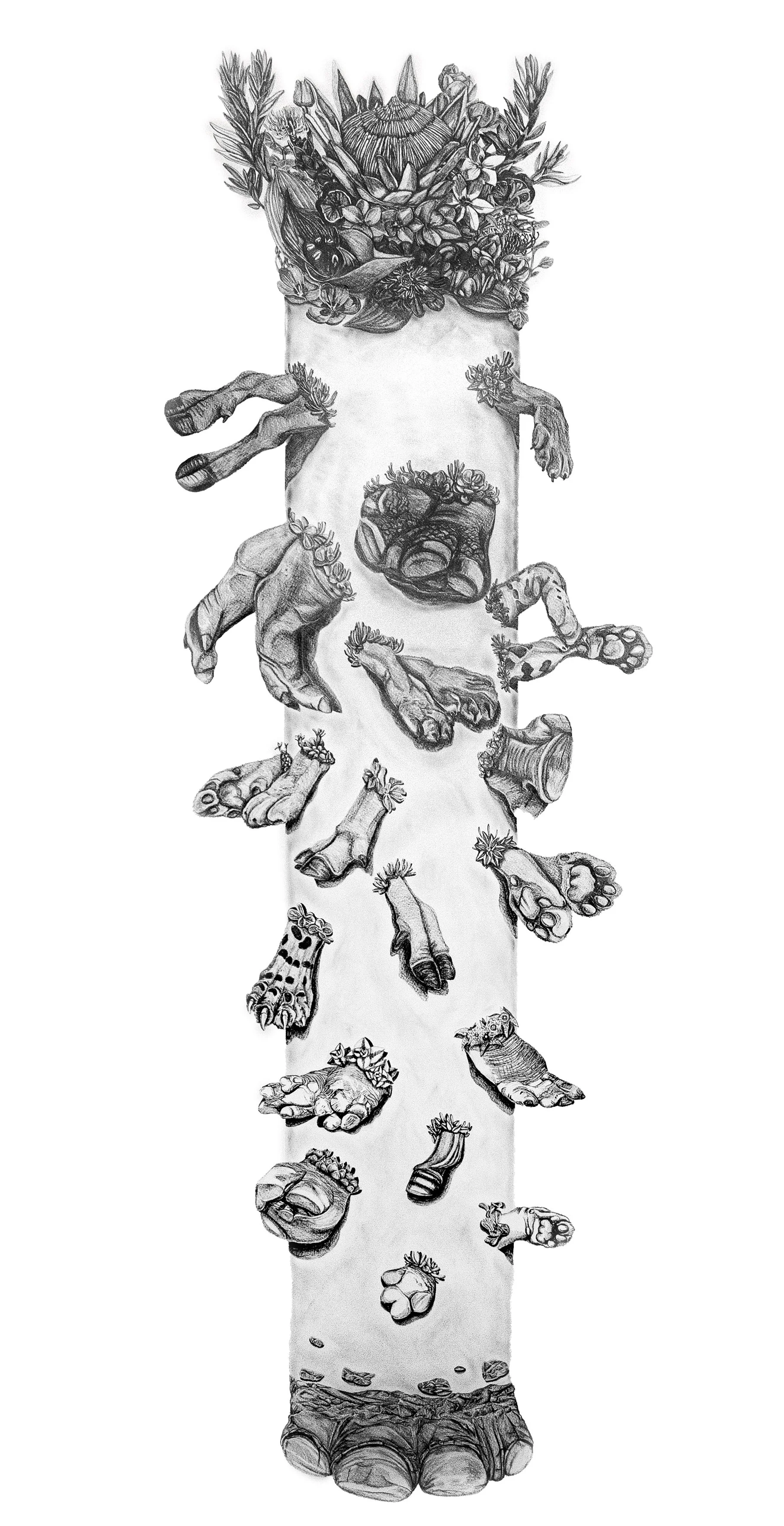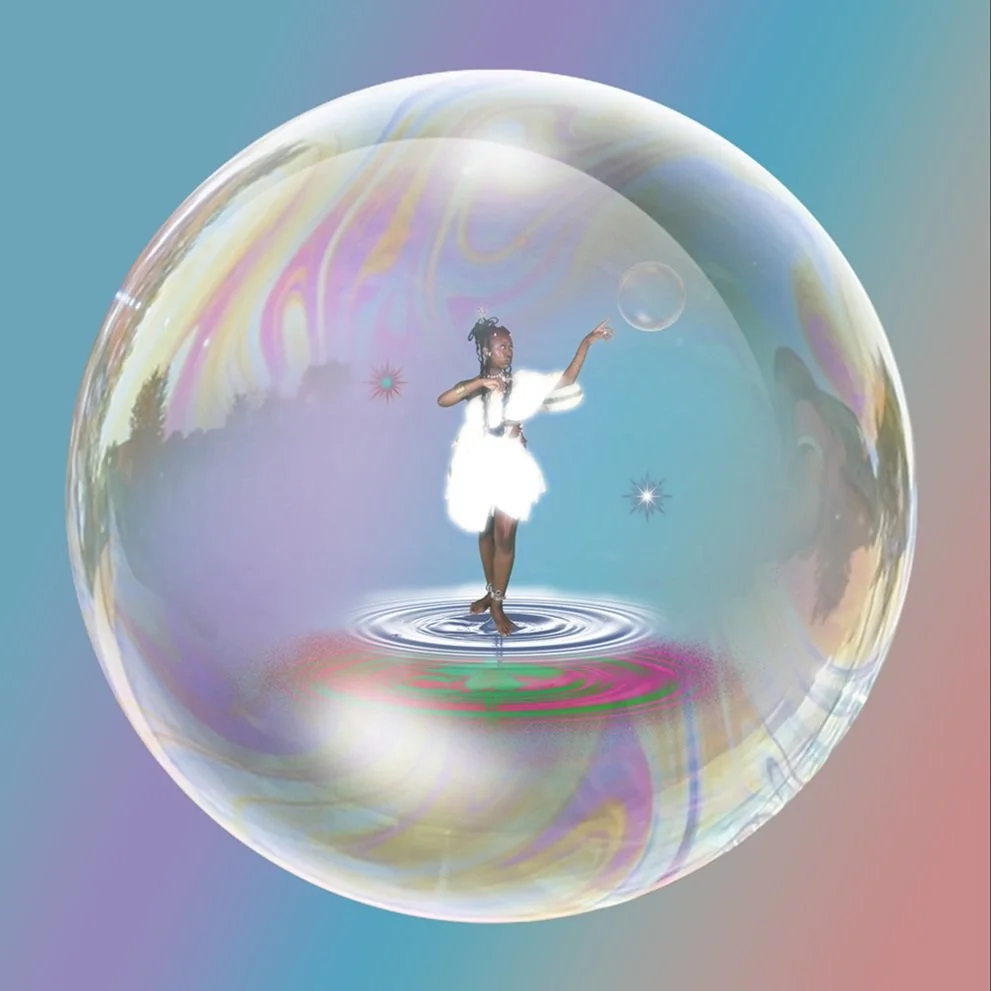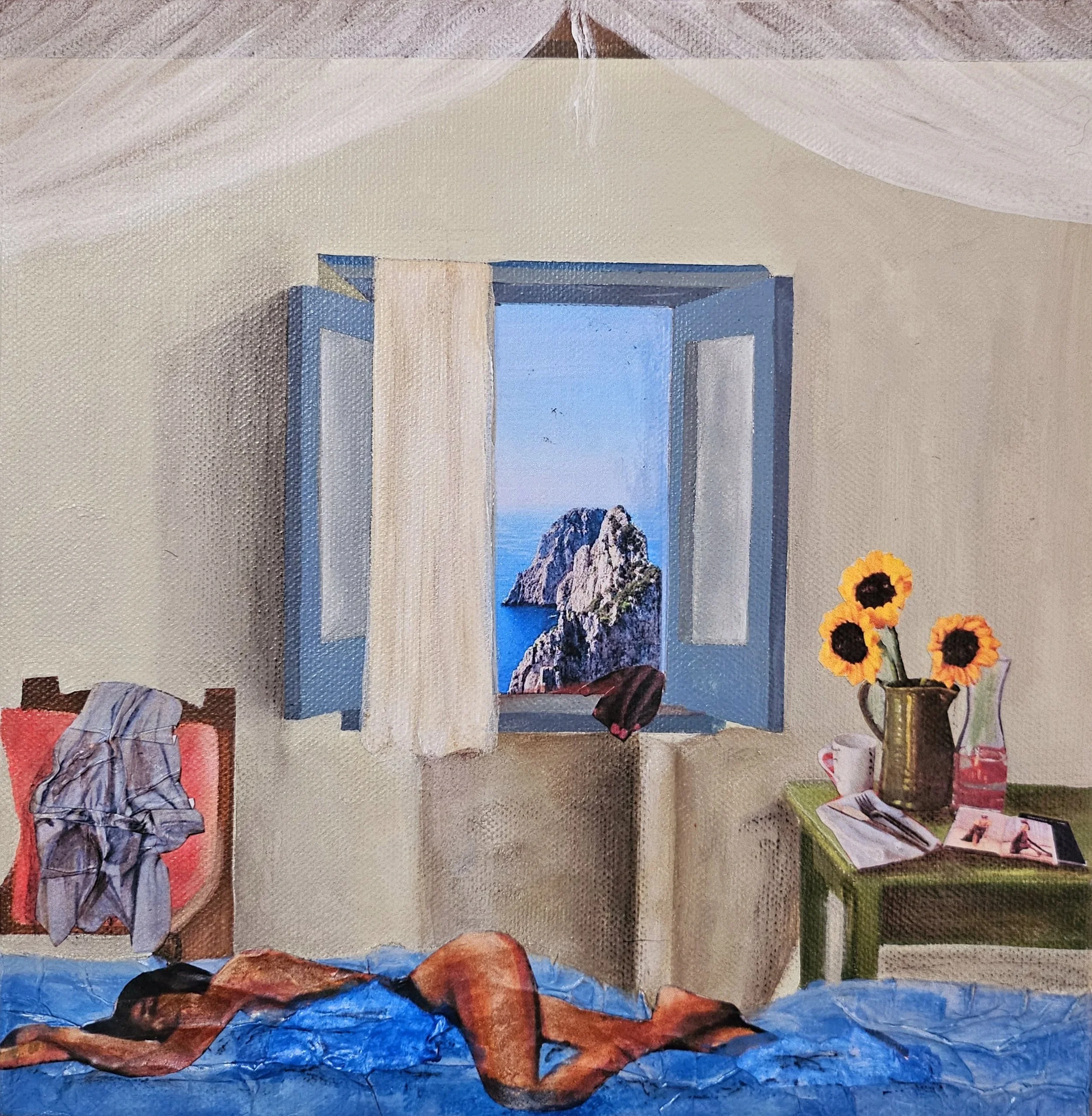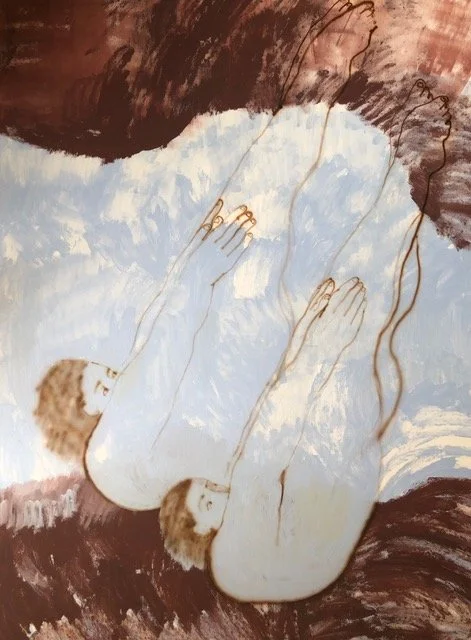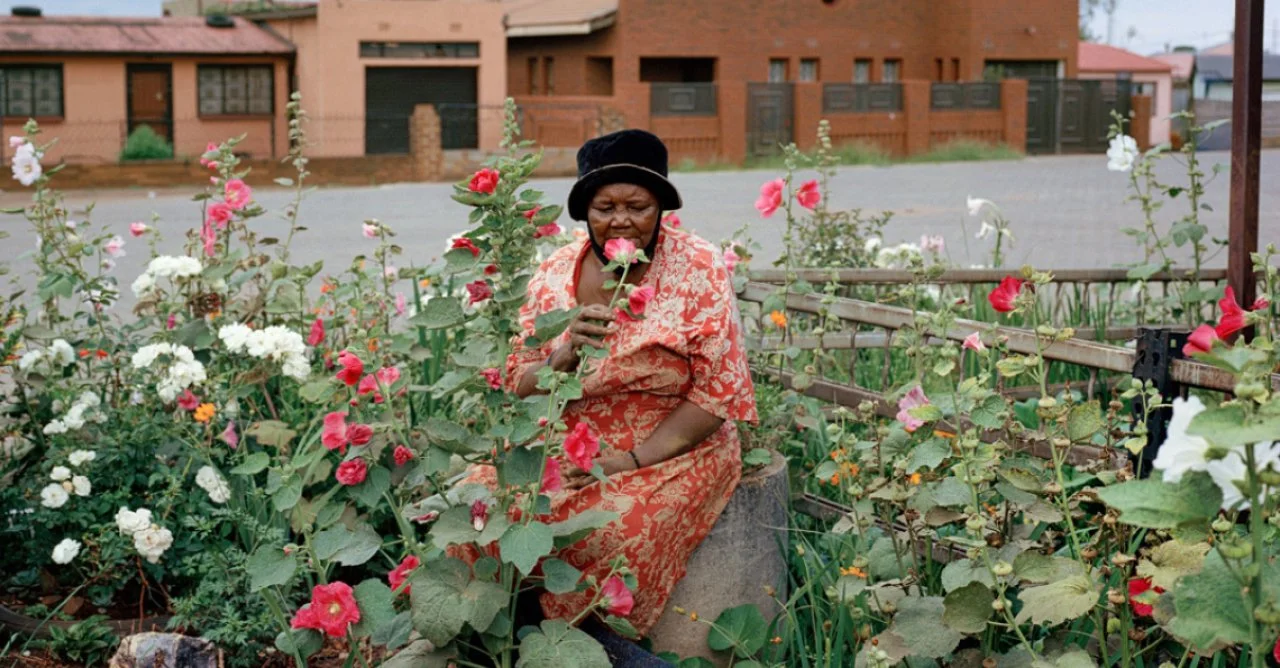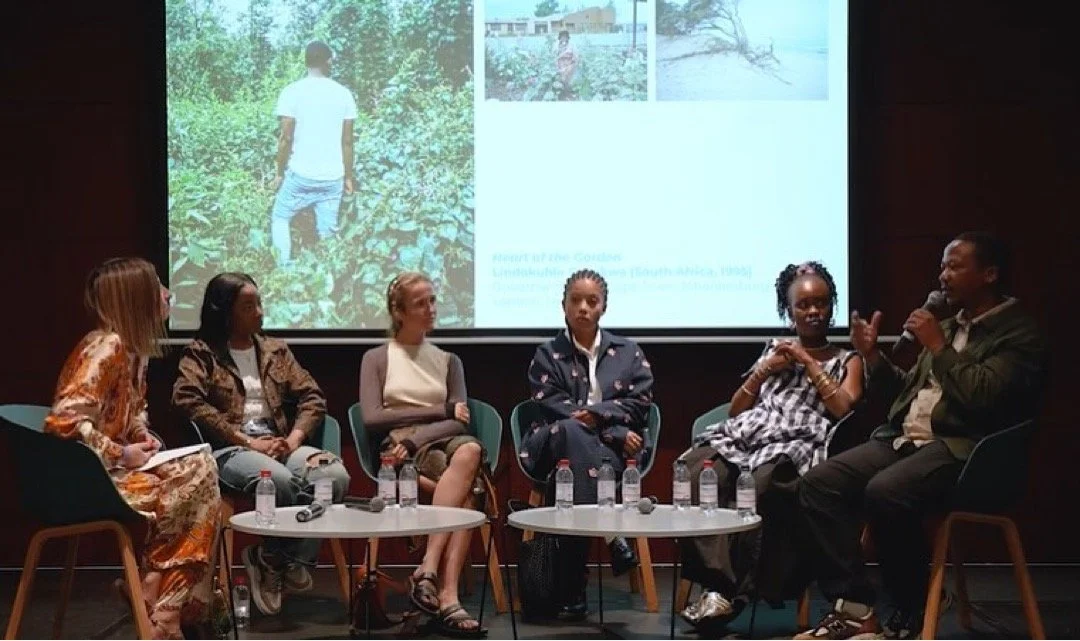-
![]()
Tomorrows/Today | Experience, Attempt, Experiment… | ICTAF 2025
Joy Adeboye (Nigeria, 1998), Asma Ben Aissa (Tunisia, 1992), Agnes Essonti (Spain, 1996), Soukaina Joual (Marocco, 1990), Mareli Lal (South Africa, 1985), Warren Maroon (South Africa, 1985) Georgina Maxim (Zimbabwe, 1980), Mulambo (Brazil, 1995), Anthony Ngoya (France, 1995), Thando Phenyane (South Africa, 1997), Mankebe Seakgoe (South Africa, 1998), Zhenlin Zhang (China, 1998)
Play is both an inherent element of art and a model for the creative process. Just like play, art is itself a practice through which we learn about the world while unlearning its prescribed rules: a realm of exploration and imagination that fosters new ways of feeling, seeing, and doing, as well as the cultivation of new communities, based on shared values and visions. As we seek to counteract the imperative of gamification that pervades today’s big data economy - where play functions as a non-coercive tool for regulation, surveillance, and affective governmentality - we aim to reframe the notion of play: beyond the illusory surface of entertainment, we reclaim play as a space for critical thinking and connection with our other possible selves, an act of disrupting the inertia of thought and action passively shaped by mechanisms of soft power. Thus, we argue that the very foundation of an aesthetic of play lies in its capacity to dismantle structures of power through an urgent desire for experimentation and knowledge, change, and freedom: freedom to question, understand, and transform one’s conditions in the world; freedom to imagine and create new possibilities for a better future, as envisioned in Paulo Freire’s utopian pedagogy. Featuring 12 selected solo show projects by emerging and underrepresented artists , TT 2025 reimagines itself as a space for learning and unlearning the rules of the game, while embracing trial and error as a core methodology and as part of the journey: they have all actively woven elements of play, experimentation, and (un)learning into the body of works presented here: venturing outside their comfort zones, pushing the boundaries of their own practice, and challenging the status quo rooted in personal or societal beliefs that feel too restrictive for their bodies, minds, or souls. Through diverse languages and themes, they all embrace the idea that art, like play, can fuel the desire for transformation and inspire society to believe that change is possible.
-
![]()
Agnes Essonti, Mother Tongue [The Over | Tomorrows/Today 2025]
Through languages like photography, video, object-assembly and performance, Spanish-Cameroonian artist Agnes Essonti Luque (The Over) explores the domestic sphere and, particularly, the kitchen and the ritual of preparing and consuming food, as cultural practices intertweened with personal memory, social history and community making. For Tomorrows Today, she will present Mother Tongue, a project that transforms her booth into a quasi-kitchen, centering her exploration on the “tongue”, as the muscular organ in the mouth used for tasting, licking, swallowing as well as for articulating speech, and therefore, as a primal site of socio-cultural and decolonial and feminist resistance. Drawing from her Cameroonian origins and the memory of diaspora embedded in her family history, this project continues her Chop Chop Chop performance and video work, which was part of the Spanish Pavilion at the 2023 Venice Architecture Biennale. It also builds on other projects in which she explores the connection between food, memory, community, and language, In pieces like the serigraphy on cotton fabric work titled Monki no fayn but mama layk am (2023) and the neon sculpture Bush butter i swit fo mboa (2022) she celebrates Pidgin, a mother tongue in her family history, dignified as a living language of resistance and exchange, echoing authors like Bonaventure Soh Bejeng Ndikung and Ngũgĩ wa Thiongʼo, amongst others. The project also features pantry shelves displaying recipes, kitchen tools, and real food - including palm wine, palm oil, gari, and glass jars filled with spices - alongside a series of photographs exploring the intersection of food and queer identity: together, all these elements transform the exhibition into a subversive and anti-colonial cabinet, where viewers are invited to taste and share.
-
Anthony Ngoya, Within Them [Galerie Caroline O’Breen | Tomorrows/Today 2025]
French artist of Congolese origin, Anthony Ngoya (Galerie Caroline O’Breen) is currently based in Brussels and Amsterdam. His multimedia practice revolves around the compilation and manipulation of archival image fragments - photographs sourced from historical colonial archives or family albums. He digitally alters these found images and transfers them onto dyed textile strips woven together, wooden panels, or draped textile assemblages, creating hybrid pieces that challenge the boundaries between sculpture, painting, and photography. Under the title Within Them, his solo presentation for Tomorrows/Today includes a newly produced body of work. While his previous fabric pieces were linked to industrial processes, this time he references the domestic sphere, as textiles, wooden materials, and images combine memories gathered from a recent stay at his uncle's home in Congo. Blending with colorful dyeing processes, the manipulated images become an extension of his gaze and attention to both the small and the vast: close-ups and zoomed-in views of human cells, such as spermatozoa, microscopic examinations of plants, and zoomed-out scenes and situations whose contexts remain ambiguous, only subtly evoked. The plastic chair - a lightweight, stackable, mass-produced furniture, both humble and omnipresent in courtyards, street corners, churches, and bars - appear in several of the wood pieces suggesting a metaphor for utility and humbleness, mobility and impermanence that somehow pervade the whole body of works.
-
![]()
Mankebe Seakgoe, The Invisible Man’s Herbarium [BKhz Gallery | Tomorrows/Today 2025]
Through her drawings, paintings, and mixed-media sculptures - crafted from a variety of materials including charcoal, paint, PVC pipes, beads, wire, and light - South African artist Mankebe Seakgoe (BKhz Gallery) has developed a distinctive visual poetics centered around handwritten text. In her work, writing becomes a non-intelligible sign, an abstract pictorial or sculptural language that only evokes a cursive style of penmanship, in which confused characters are written joined in a flowing manner, yet sometimes erased and re-written. Shaped as language for self-discovery that deliberately avoids figurative representation - hence, photographic or pictorial self-portrait - the work of Seakgoe challenges traditional ways of understanding, communication and expression: none of the words she inscribes are meant to be legible as her signs exist in an ambiguous space - they are a draft that is intentionally unintelligible, a text that needs to remain obscure to be fully clear to its author. Hermetic yet visually striking, her language becomes a metaphor for the metatext itself. Titled The Invisible Man’s Herbarium, her project for Tomorrows / Today brings together a body of works on canvas and on board, as well as sculptural pieces, deeply inspired by literature - one of Seakgoe’s main sources of influence, as she is an avid reader. References to Cain’s Book by Alexander Trocchi - a novel marked by an aware self-reflective gaze on life of a junkie protagonist - and to David Wagoner’s poem Lost, surface in non-explicit ways, as readings that have accompanied the making of this body of work. Collectively, these pieces reflect on the often-bizarre twists of fate in one’s life journey but also on the clarity that comes with living according to one’s truth and values. Seakgoe visualizes herself in this experience through the image of a chandelier dancing alone in her studio - a vision materialized in The Invisible Man (2024-2025), a sculpture composed of wire, glass beads, oil paint, crystal beads, and found materials, whose shape evoke the elegance and solitude of a suspended chandelier.
-
![]()
Zhenlin Zhang, Mirror Dream [tHEIR | Tomorrows/Today 2025]
A recent postgraduate student at the Royal College of Art, Zhenlin Zhang (tHEIR) from China specializes in oil painting. His ethereal, evocative compositions, situated between atmospheric abstraction and opulent figuration, are rendered using a color palette dominated by blues, violets, and reds. His compositions delve into memory and emotion, weaving together imaginaries of both resilience and reverence, while also carving out space for imagination as a practice of image-making. Under the title Mirror Dream, his body of work for Tomorrows/Today constructs a dreamlike narrative around the symbolic figures of the mask and the mirror. A theatrical reenactment of the drama of life, the paintings offer visual metaphors that reflect on the transitory and fragile nature of both beauty and of life. Like fantastical tableaux evoking mythical, otherworldly realms, they appear to be populated by figures depicted only in fragments: they possess a soft texture, gentle shapes, and a sensual materiality. Yet they are too vast, complex and ephemeral to be fully captured or defined, so they dissolve and evolve beyond the frame, allowing us to grasp only glimpses - much like the ever-evolving nature of our own most intimate selves. They appear as metaphors of benevolent mirrors to our souls, yet they also hold the intrigue of enchanted looking glasses that show magnificence and hide a true darkness.
While Zhang’s concerns are deeply rooted in biographical and familial experiences, this body of work also engages with his closeness to, and fascination with, Tibetan culture and spirituality. This dimension is emphasized chromatically through the use of deep reddish-brown tones, known as Tibetan red, alongside his unique use of pearlescent oil paints, which create a shimmering glow. Light reflects on the paintings’ surfaces like reflections on water: shifting, never fixed.
-
![]()
Soukaina Joual, Raw Body [Spiaggia Libera | Tomorrows/Today 2025]
Soukaina Joual (Spiaggia Libera) from Morocco uses textiles, collage, and installation to reflect on the body’s capacity to transform, transcend, reshape, and reimagine itself, challenging normative narratives around the female anatomy and bodily experience. As the body becomes the central figure and a sign from which to build metaphors, her work addresses social issues of race, gender and sexuality, as well as how these categories are psychically, socially, sexually and representationally produced. Titled Raw Body, her solo project for Tomorrows/Today brings together a series of embroidered textile works that originates from a pure exercise of collage - that is cutting, layering, and assembling different photographic materials centered on the female body as subject, resulting in the construction of new compositions, a synthesis, a new deformed yet somewhat harmonious figure, later transposed onto different fabrics through embroidery. Emerging from a previous project - Em/body/ies - this new body of work includes a series of embroideries on small white doilies that recall the intimacy of the domestic sphere, as well as large scale embroidery works on sheer and light fabrics that resemble curtains gently moving with the passing air. In them, these new, beautiful creatures that seem to pose elegantly despite their oddness, evokes in the viewer a sentiment of loss and confusion, ambiguity and vulnerability, yet also harmony and sensuality.
-
![]()
Mareli Lal, No Men’s Land [SMAC | Tomorrows/Today 2025]
Mareli Lal (SMAC Gallery) is a conceptual photographer from South Africa, who exploits the storytelling potential of form, color, and texture in her images, where she juxtaposes and assembles elements from diverse contexts to create dynamic and unexpected tensions. No Men’s Land, her project for Tomorrows/Today, consists of a constellation of lightboxes and dibond-printed photographs that result from her most recent studio experimentation, where human bodies and fabric bodies, equally subjected to manipulation, folding, or stretching, become materials for abstract, still life-like compositions. Lal frames the female body as both subject and territory: an autonomous space where women look at other women, free from the interpellation of the male gaze. The female body is no man’s land, as suggested by the project’s title. Through her lens, women are captured in a refined yet playful fashion and advertising studio photography style - a visual language shaped today by consumer culture. Yet, within these carefully staged compositions, moments of disruption emerge, causing the poses to collapse: bodies appear humorously yet fashionably disordered and fragmented, tangled with clothing or folds of curtain fabric. In some images, the human subject is entirely replaced by sculptural assemblages of draped textiles, rendered in still life as almost post-classical statues displayed on plinths, dominated by plastic and tensioned textures, evoking the same fragmented, displaced body language that runs throughout the series.
-
![]()
Mulambö, O drible, a paixão e a magia [Reiners Contemporary Art | Tomorrows/Today 2025]
Mulambö (Reiners Contemporary Art) from Brazil engages with the festive and celebrative character of soccer, carnival, samba and Brazilian music to stress their connection with anti-racist resistance within the Afro-Brazilian communities: these cultural expressions, often capitalised as symbol of Brazilian national identity, have served as sites of both celebration and struggle. Primarily working in painting and sculpture, for Tomorrows/Today he presents O drible, a paixão e a magia (The dribble, the passion and the magic), consisting of a new body of work centered on soccer, a game integrated in the collective imagination as a symbol of hope and social redemption for the lower classes. He explores forms of anti-racist resistance through the lens of the performing body in football - the body of the players as well as the body of the fans. In the latter case, this becomes a tool for self-expression and affiliation to a specific team: body painting, choreographed chants, and ritualized performances, display the fans’ devotion to their teams with profound engagement and passion.Through this reference to the body, the artist also reclaims the intelligence that was historically denied to Black players in the sport. For years, Black athletes in Brazilian soccer were subjected to racist narratives that undermined their intellectual capacity. They were often portrayed as instinctive, untamed, and spontaneous players, lacking technical skill or strategic thinking - that is, an almost animalistic depiction that disregarded their rational and emotional intelligence. By reclaiming this history and challenging these stereotypes, Mulambo’s work celebrates the resilience, ingenuity, and tactical intelligence of Black athletes, repositioning their contributions as central to the evolution of soccer globally. Presented in Cape Town, the project is clearly in resonance with the South African context, the project also recalls when the 2010 World Cup played a pivotal role in transforming this once-colonial sport into a Post-apartheid emblem of political and social liberation.
-
![]()
Warren Maroon, Between Us [Everard Read | Tomorrows/Today 2025]
The work of conceptual artist Warren Maroon (Everard Read) draws from both social commentary and biographical elements, particularly his upbringing in the Cape Flats, South Africa, where social life is deeply marked by a sense of precarity, gang violence, and historical stigmas. Through a practice primarily centered on sculpture and installation, Maroon creates emblematic and eclectic pieces by manipulating, assembling, and intervening found objects - which, when transformed and transposed into the aesthetic realm, unleash multiple, powerful, and deeply political metaphors. Titled Between Us, his project for Tomorrows/Today brings together a series of new sculptures that reflect on the notions of borders and boundaries, as well as the dialectics of duality, mirroring, and togetherness. His visual poetics emerge through the assemblage and transformation of objects sourced from different contexts and uses: from windscreens and wall clocks to wooden chairs and Okapi knives. Juxtaposed, reassembled, or intervened upon, these elements generate strong conceptual tensions, often emphasizing the interplay between delicacy and roughness, or beauty and violence. The brutal contradictions of economic injustice are addressed through an attention to the affective dimension of life, as seen in 9 to 5 (2025), where phrases such as "beg, borrow, steal, plunder" and "live, laugh, love, cry" replace the 3, 6, 9, and 12-hour marks on two wall clocks placed side by side. Similarly, Utopia features two seatless wooden chairs facing one another, acting as a cage for two identical cement busts: one elevated by rocks, the other sunken, standing on matchsticks. The poetics of love and sentiment emerge in contrast to the harsh realities of life in works such as 820 000 kms, a Nissan Champ windscreen with a skull etched into black paint overlaid with broken shards of toughened glass, which also bears a white spray-painted text from I Know Why the Caged Bird Sings - Maya Angelou’s book that explores how love of art and literature can help overcome racism and trauma. Another key piece is a wall installation that combines Okapi knives with extended mahogany-stained branch handles, from which white paper roses bloom: as they float against a white background, these sculptures become somehow bittersweet statements that pair violence with tenderness, resilience with fragility.
-
Joy Adeboye, Perversion of Quiete Girls [AMG Projects | Tomorrows/Today 2025]
Joy Adeboye (AMG Projects) from Nigeria is carving her own path within the contemporary revival of watercolor techniques - a medium with a history that stretches back to the origins of art itself and that a few contemporary artists, from Carol Rama and Francesco Clemente to Barthélémy Toguo, have reinterpreted as a means of navigating the ambiguous space between reality, the fantastic, and political utopia. Adeboye’s practice extends this lineage while shaping a language of her own. While in her previous works she explored a mystical interplay of color and form to express her own subjectivity and intimate inquietudes, for her solo project in Tomorrows/Today, she has produced a new body of work that delves into the intimate realm of desire and sexuality. Titled Perversion of Quiet Girls, her work draws from both personal experiences and erotic fantasies while also referencing an autobiographical novel written in Paris in 1971 by an anonymous author - likely a woman - a book that was initially banned in the United States until it was ultimately deemed non-obscene and published. Sometimes appearing as collages of different papers or as single compositions, Adeboye’s pink-toned watercolors evoke both the delicacy of petals and the softness of flesh, exploring ambiguous anatomies that subtly recall Georgia O’Keeffe, while offering weightless yet profound reflections on the personal and universal dimensions of eroticism, femininity, and desire. As it challenges the sexual morality imposed by religion and social structures upon women, her wandering, sensual, and poetic journey through the inner self becomes a playful yet courageous statement of freedom and self-emancipation.
-
![]()
Georgina Maxim, Winter Wonders [Goodman Gallery | Tomorrows/Today 2025]
Zimbabwean artist Georgina Maxim (Goodman Gallery) is carving her path within the new wave of textile art, employing techniques such as sewing, weaving, and embroidery. For Tomorrows/Today, she presents Winter Wonders, a new series of works inspired by the lives of insects, produced during a winter residency in the rural setting of Village Unhu, an artist-run space she co-founded in Harare. With this project, she continues her engagement with traditional textile techniques known in Shona as dhunge mutunge, a method of quickly assembling materials so they hold together. By dismantling, reshaping, and reassembling second-hand women’s garments, she transforms them into sculptural works that metaphorically revive the memories and narratives embedded in the history of these clothes. Clothes designed for women are particularly interesting to Maxim, as they are not only more complex and heterogeneous in their fabric assemblage and color palettes compared to those designed for men, but they also absorb and embody women’s cultural behaviors: women tend to be more physical in their interactions, paying attention to each other’s clothing, touching, and using garments as part of a language of love and affection. On another level, these works also address the urgent issue of the unsustainability of the global fast fashion industry, which has led to Zimbabwe and other African countries becoming recipients of a booming market for “pre-loved” clothing imports from overseas.
-
![]()
Asma Ben Aissa, i Thaer Wal Baten [Blue Wind Project | Tomorrows/Today 2025]
Asma Ben Aissa (Blue Wind Project) from Tunisia specializes in textile art for which she uses recovered fabrics from diverse contexts - ranging from everyday domestic clothing to ceremonial garments - to create large-scale installations, small and delicate sculptural pieces, or canvas-like tapestries, intricately intervened with various sewing and stitching techniques learned from fellow Tunisian women experts in traditional embroidery craftsmanship. In her work, sewing becomes a process that bridges the dual nature of architecture: the space that articulates both indoor and outdoor life, a means of weaving histories together: the experiences of the outside world are processed within the safe space of home, where, through the abstract language of weaving, the artist restlessly re-narrates stories using needle, thread, and fabric. Her works unfold as visual poems, inviting attentive yet quiet contemplation and deciphering. In line with this exploration, Ai Thaer Wal Baten (The Visible and the Invisible), her project for Tomorrows/Today, centers on the architectural element of the window, turned into a symbol of the dialogue between the visible and the invisible, the private and the public sphere. The articulation between the private realm of domestic space and the public dimension of urban life is key in traditional Arabic architecture; in certain Middle Eastern countries, which the artist has explored through travel and artistic residency programs, windows are often kept closed, blocking the flow of light, air...thoughts, and communication, between the outside and the inside - this being a metaphor for how women’s lives have traditionally been confined to the hidden, invisible domestic sphere. Thus, by weaving together imaginaries around windows as symbolic elements, she has produced a new body of work that, while concealed behind the beauty of embroidery, stitching, and sewing, subtly alludes to more personal and social concerns surrounding womanhood.
-
Thando Phenyane, Part Black Part Anomaly [Eclectica Contemporary | Tomorrows/Today 2025]
South African architect and painter Thando Phenyane (Eclectica Contemporary) explores the relationship between the Black body and architectural space - what he refers to as "its existence in the non-space” - drawing from personal experience, literature, film, and biblical narratives. Continuing his line of figurative, quasi-surrealist paintings filled with symbolic elements and a palette dominated by shades of grey, his project for Tomorrows/Today is titled Part Black Part Anomaly and presents a series of works where anonymous, shadowy Black figures, both humorous and unsettling in their expressions, interact with animals, monstrous creatures, and symbolic elements, set against white-striped, “Ikhukho”-like backdrops. Phenyane’s depiction of the Black figure within an apparently calm yet subtly disturbing theatrical setting invokes a dimension of play as enactment, where literature becomes a point of reference: his work engages with the historical barbarity of human zoos, as depicted in Zakes Mda’s novel The Zulus of New York, as well as the experience of self-alienation described in Frantz Fanon’s Black Skin, White Masks, which vividly explores the psychological and existential violence of internalised racism - that is self- assimilation of Black people into whiteness as a means of social acceptance. Thando’s golden masks symbolize a reaction to this legacy, standing as emblems of emancipation and self-awareness.
-
![]()
Tomorrows/Today | Inhabiting The Wild | ICTAF 2025
Natalie Paneng (Sudáfrica, 1996), Cinthia Sifa Mulanga (Republica Democratica de Congo, 1997), Raphael Sagerra Finok (Brazil, 1985), Rita Sala (Spain, 1994), Maria Sosa (Mexico, 1985), Lindokuhle Sobekwa (Sudáfrica, 1995), Marlene Steyn (Sudáfrica, 1989), Gabe BC (USA, 1982), Boemo Diale (Sudáfrica, 2000), Edi Dubien (France, 1963), Marc Herrero (España, 1977), Manjot Kaur (India, 1989).
Inhabiting the Wild brings together 12 solo projects by emerging artists, responding to the urgent need for an "ecological reimagination" that questions binary categories and value systems inherited from colonial-modern thought.
Inspired by Jack Halberstam’s concept of the wild - understood as an overflowing and unbounded space that resists modernity’s impulse towards order - the projects explore new ways of inhabiting the world and connecting with the non-human beings that surround us. They propose alternative modes of dwelling in the body, mind, and memory, while challenging dominant narratives about how we live in and relate to the world.
Through posthumanist practices, queer and feminist ecologies, new materialisms, and the speculative recovery of pre-colonial knowledge, these projects offer plural counter-visions of the past, present, and future. They invite us to imagine new forms of coexistence beyond imposed hierarchies, embracing a more inclusive, fluid, and interconnected way of relating to the world and its ecosystems.
-
![]()
Marc Herrero, Exquisite Pangea [Le Violón Bleu / Tomorrows/Today 2024]
Inspired by a post-natural and post-humanist critique, as well as by an ecological critique of the colonial history of Africa, the solo project Exquisite Pangea by Spanish artist Marc Herrero is populated by uncanny creatures that refuse any scientific species classifications, as they blur the boundaries between the human and the non-human, or between natural and artificial beings. By depicting human bodies transformed into animal forms and vice versa, he draws attention to the devastating effects of industrial agriculture, deforestation, and climate change on the natural world.
His iconography, centred on metamorphic bodies, also explores the complex symbiotic and emotional relationship between humans and non-human species, challenging the capitalist and colonial epistemology of the domination of the former over the latter. Some of the artist's portrayals of deformed creatures —like his overbuilt cow that evokes bodies transformed by anabolic steroids in the work “Cow” (2023) — reference the pressure contemporary society exerts on bodies, minds, and souls, constantly pushed toward productivity and an idealised perfection.
Especially conceived for Tomorrows/Today, Inhabiting the Wild, a series of drawings point to the very epistemology of hunting as a primordial survival practice that has been perverted during the colonial process and that survives today through the economy of legal and illegal trophy hunting.
Recalling the practice of taxidermy mounting, in “Protein Pillar” (2024), a myriad of small animal paws—including the five great animals that are part of the natural ecosystem of South Africa and that are considered the most desirable hunting trophies—swirl around a column. Culminating with a floral ornament that recalls the South African national flower (the protea), the column references the architectural structure that more than anything else symbolises the very sustainment of what modernity has named civilization. A tribute to the part of the living bodies that primarily support life, that is, the paws as living columns, this work poses questions like: “Who supports whom in the cycle of life?”.
In his “Sinfonia del Desamparo” (2024), Herrero reinterprets the famous 16th-century engraving by the botanical Dutch painter Pieter van der Borcht the Elder, depicting a fantastical animal with the heads of various other animals sprouting from its body, known to be an allegory for the difficulty of ruling over a diverse nation. Here the artist continues his dialogue with the South African original fauna, impacted by the violence of colonial history and that still nourishes the imagery of wildlife as a primordial desire that persists today between the tourist industry and national heritage complex. Herreros’ chimeric beast loses its aggressive appearance, becoming a body-bestiary where the heads of the animals—from elephants and zebras to hippos, seals, lions, and springboks, amongst many other animals from both land and marine environments—coexist symphonically. They indicate a constellation of vital emotions, passions, and impulses, while also containing hidden references to history and myths from South Africa: from the legendary Grootslang, a fantastic creature depicted as a mix between an elephant and a python, to the story of Hippo Huberta, the notorious female hippopotamus who travelled for a large distance across the country, becoming revered by Zulus and Xhosas alike, whose death by the hands of three farmers in 1931 shook the entire nation, so much that her body was re-dignified through taxidermy and exhibited since then in a national museum. Emerging from the stomach of the beast, three rhino heads have their precious horns replaced with human hands communicating in South African sign language: “freedom”, they say.
In this solo project, Marc Herrero’s multispecies iconography paves a path in which historical, political, and environmental questions are posed to the viewer, who is called to reimagine human-nature relationships through principles of empathy, reciprocity, and responsibility.
-
![]()
Manjot Kaur, Of Love and Longing [Caroline O’Breen Gallery | Tomorrows/Today 2025]
The idea of interspecies mating and hybridizations is central in the work of Manjot Kaur, who presents the solo project Of Love and Longing as part of Tomorrows/Today 2024. Inhabiting the Wild. The Canada-based Indian artist references queer and eco-feminist literature while reviving the Indian miniature painting tradition in her oneiric compositions, where bird-headed women's bodies give birth to complex ecosystems.
The goddess of abundance, fertility, and sexuality, Lajja Gauri, and mother goddesses - Yoginis appear as a central figure in the series “While She Births an Ecosystem”: They appear as a cow- or lotus-headed human body gifted with special fertility power, as her progeny ensures the continuation of the biodiversity of flora and fauna.
Other epics, mythological, and religious narrations are evoked and yet entirely reinterpreted by Kaur in the series “Hybrid Beings”, gouache and watercolour on paper diptychs, where fantastic illustrations and handwritten texts meet in graceful asymmetrical compositions. Here, Kaur recovers and rewrites one of the most illustrated themes of Sanskrit literature: the Ashta-Nayika or the eight romantic heroines, female figures whose stories of love represent eight different states of a relationship with a male hero. Figures of endangered births from the Indian peninsula fauna are integrated into Kaur’s compositions to subvert the original narratives, from which the figure of the male hero is completely removed.
For instance, in 'Proshitabhartruka and The Bengal Florican' (2022), the original story of a disconsolate woman abandoned by the husband is reimagined as the re-encounter, through the poetic of writing, between a bird-headed female figure and a Bengal Florican; or in 'Utka and The Cinnamon-Headed Green Pigeon' (2024) where the Nayika’s anxious loneliness is replaced with a sense of harmony and connection with a new birth classified as at risk of extinction. Through imagery founded in multispecies and interspecies speculations, these works raise concerns both toward endangered biodiversity and the narrative of weak or incomplete womanhood.
Seeds and flowers, among other botanical elements, are a leitmotif in works like “The Botanical Womb” (2021), whose ornamental nature is only apparent, as it entails a speculative effort to reimagine the world’s biodiversity regenerated by seeds of intertwined species. In the artist’s words: «In a world dominated by monocultures, I imagine what the world would be like if ecosystems could produce seeds containing the genome of intertwined species (endangered and extinct), and a capacity to disperse and regenerate biodiverse ecosystems. Each individual seed would carry the potential of producing a myriad of unique ecosystems under different conditions, therefore making them polymorphous seeds.» - Manjot Kaur
-
![]()
Boemo Diale, Going Home [Kalashnikovv Gallery | Tomorrows/Today 2024]
The youngest among the participating artists of Tomorrows/Today 2024 - Inhabiting the Wild, Boemo Diale presents a solo project titled Going Home, where she explores themes such as queer identity and spirituality while centering their iconography around the binomial of the body and the utilitarian pot or vessel, to explore the wild in terms of introspection and healing. Humanity is mostly imagined in Diale’s paintings as encapsulated in the confines of vessels. In Diale's vision, these vessels are not merely objects with a holding, containing function: they are nurturing spaces where the self can gestate, evolve, and eventually emerge transformed. Just as the womb shelters and nurtures life, they are cradles caught between two apparently opposed moments - containment and potentiality. They offer a refuge while preparing for growth, self-discovery, and renewal.
In the series of mixed media paintings, whose vivid and fluorescent, strikingly contrasting colors suddenly appear to the viewers not as a random choice, but as a distinctive sign of Diale’s painting language, we find vessel-harboring stylized bodies floating in vital amniotic fluid. Tacitly drawing on the artist’s biography, the maternal metaphor of this body of works takes on new pathways. Inspired by a Pan-African primitivist graphic stylization, her iconography acquires a three-dimensional new corporality with hand-carved frames the artist produces in collaboration with craftsmen from Zambia. Appropriated and reinterpreted, these traditional ornamental elements acquire a new, storytelling purpose, as their graphical motifs share mysterious tales accessible only to the very few. Continuing with this new three-dimensionality, Diale presents for the very first time a new series of vessel-shaped ceramics, glazed slip decorated with anthropomorphic motifs. Within the constellation of works in Going Home, these pieces contribute to imagining a radical return to oneself, a pilgrimage inward toward our very source of existence
-
![]()
Natalie Paneng, Ethereal Encryptions [EIGEN+ART | Tomorrows/Today 2024]
In her solo project for Tomorrows/Today - Inhabiting the Wild, titled Ethereal Encryptions, South African artist Nathalie Paneng draws inspiration from sacred indigenous knowledge, magical realism, and speculative techno-futurism to create a oneiric yet tangible environment. Heterogeneous elements such as sculpture, textile pieces, moving images, and sound are brought together in uncanny harmony. Through her multi-medium approach, she plays with the viewer's perception. Lenticular image technology is used for a body of works that envisions a utopian universe of ecological balance. The principle of correspondence between the macrocosm of the universe and the microcosm of the individual is conjured like a magic formula in “Venus Finds Balance” (2024), a digital textile work that portrays the artist casting a spell through the balancing of floating bubbles. In the lenticular image of “Bubblescape Odyssey” (2024), she imagines herself encapsulated in one of these iridescent soap globules that magically float in an imaginary space-time dimension. A three-phase narrative takes place in the triptych “Where is the Garden of Eden?” (2024) as we displace in front of this lenticular image composition: here speculative imagination is used to envision a Garden of Eden, a rural village of huts built from giant shells overlooking a magical body of water from which a mother goddess emerges. Populated by human beings with the appearance of the artist herself, we wonder if this remote place of perfect harmony between natural and virtual beings comes from the past or the future. Contrastingly, with the transient and vanishing character of these moving images, a patchwork of burlap and other textiles is used in pieces like “Texture of a Bubble” (2024) or “Cosmic Map” (2024). Enamel bowls, reminiscent of those used in various gatherings such as funerals, weddings, celebrations, and rituals that are familiar to the artist’s spiritual heritage, are transformed into cosmic holding vessels in “Sacred Nexus” (2024), a sculpture laying on a ground of soil.
Laying in the intersection and perfect balance between two textures of the worlds, one that is corporeal and tangible, and the other ethereal and whimsical, Nathalie Paneng ponders the possibilities of a harmonious coexistence between humanity, technology, and the cosmos.
-
![]()
Cinthia Sifa Mulanga, Like Ice Cream [BODE | Tomorrows/Today 2024]
While DRC-born artist Cinthia Sifa Mulanga is known for her paintings, whose imagery is centred on sumptuous fortified interiors, evoking aspirational lifestyles and inhabited by glamorous black female subjects, in her solo presentation Like Ice Cream, she scrutinises a vibrant springtime world beyond the confines of domestic windows. Like human-sized postcards, these views toward natural and urban landscapes are a testament to the artist’s fragmented memory of youth mixed with imagination. From a hotel room overlooking the Faraglione, the iconic rock formation rising from the sea in front of Capri island, to open-air domestic lounges offering leisure activities under the expansive blue sky, to trompe l'oeil-like views of lush gardens, these ouvertures to the world outside serve as allegories of hope and the courage to venture beyond one's comfort zone.
Female characters portrayed as empowered black women are still the main subjects of Mulanga’s paintings. The spaces these subjects inhabit have, on the other hand, become progressively more metaphysical in their compositions, their oneiric atmosphere being impregnated with a mysterious quality. The eerie architecture of space, dominated by uncanny perspectives and unexpected juxtapositions of objects and characters. Giant spoons, traditional African wood statues, or oversized hands stand out unannounced, interacting with the depicted intimate scenes taking place in the lavish interiors and terraces: they create moments of oddness or a feeling of strangeness in otherwise conventional middle-class domestic environments. By transcending the boundaries of domestic interiors, Mulanga’s new surrealist-inspired intimate landscapes tap into the subconscious mind, bridging dualities like familiarity and strangeness, certainty and bewilderment.
-
![]()
Rita Sala, Pista, Rastre [Ana Mas Projects | Tomorrows/Today 2025]
For Spanish artist Rita Sala, the pictorial medium is a tool for the exploration of her inner self, a journey toward both corporal and emotional healing, a space of negotiation between tension and release, disciplining and unbinding, of sameness and difference.
The human body, its anatomy, the articulation of its bones, the cons its intentional and unconscious movements, are central elements in her research: from her own physicality, with which she experiments with the medium through pictorial gestures, to the figures of her subjects, genderless humans whose activities, thoughts, and emotions are ambiguously narrated in her paintings. Inspired by a balance between two elements of the Tarot, water and earth, as well as fragments of novels and poems, Rita Sala’s solo project Pista, Rastre / Trail, Trace seems to evoke the tension between taming and unbinding of the self. Both water and earth are elements necessary for the growth and nurturing of the bodies and the emotions of humans and non-humans.
The project brings together two bodies of work in dialogue. The first consists of a series of earthy-toned paintings on canvas, where brush and airbrushing techniques complement each other. The series “Saltito (Little Jump)” portrays human bodies falling suspended in the atmosphere, immortalised in a diving motion: bodies seem to abandon themselves in a free, unbounded fall, yet, like in Olympic diving, the more disciplined and trained the body, the smoother its path through the air into the water. Other works like “Embolics (Tangle)” (2023), “Cap cap cap (Head head head)” (2022), or “Trote (Trot)” (2023) manifest the intention to suggest complex narratives that remain, however, only hinted, leaving it to the viewer to complete the tales or to simply imagine these figures as rather completely abstract compositions. According to the artist, this body of work manifests the element of water, a metaphor for fluidity and strength, but also a symbol of the affective and emotional system, in the Tarot. Here the act of painting is understood as a process that connects the hand and the eye in a magical synchrony: the organs have their own knowledge, their own memory. It is a process that Rita chooses to approach through a sort of unbounded intuition, where pictorial gestures materialise in strokes that sometimes define uncertain contours and shapes. Those that might feel like errors at the beginning are assimilated as signs indicating a new direction, as if they were part of a divination journey. The second body of work, a series of monochrome airbrushing paintings on natural brown paper, offers a narrative dominated by the element of earth, a symbol of tangibility and action. Here, human bodies are unequivocally protagonists of a bucolic storytelling, depicted in interaction with a different array of tamed and untamed non-human beings: from a peacock or dragonfly to a wallow or olive branch. Emotions still surface in these scenes, whose atmosphere of suspense and mystery is accentuated by the blurry lines and soft texture of the airbrushing painting technique. It is precisely through Rita’s constant questioning and deconstruction of the pictorial techniques and the structure of the images that dualisms like the inside and the outside, the movement and the stasis are dissolved or, at least, put at rest.
-
![]()
Lindokuhle Sobekwa, Heart of the Garden [Goodman Gallery | Tomorrows/Today 2024]
Departing from a detached, observational documentary approach, Lindokuhle Sobekwa's photographic work embraces a radically lyrical language intertwined with an autobiographical narrative. His relationship with his sister, Ziyanda—who tragically passed away after being estranged from her family for over a decade—lies at the very origin of the project "Ezilalini (The Country)." A selection of images from this body of work, dated 2018 and all shot with a medium format camera, are brought together for Heart of the Garden, his solo project within the program Tomorrows/Today 2023, Inhabiting the Wild. The series captures Sobekwa’s journey to explore his family's history through a gruelling nine-hour voyage from his residence in Thokoza, Johannesburg, to Transkei in the Eastern Cape—the region of his family roots, where Ziyanda spent her childhood and where she is now buried.
From urban gardens as symbols of resistance to endless fields that vanish into the horizon, pointing towards an unreachable infinity, Sobekwa selected from this photographic journey the images that best narrate the intimate intertwining between the search for his ancestral roots and his connection to a South African natural landscape marked by historical anguish.
The idea of Nature appears in Heart of the Garden as a complex intersection between the imagery of the garden and that of the graveyard—a primordial site of grief and hope, violence and beauty, politics and spirituality. The words, “As a people, we can look our ancestors in the face and say: your sacrifices were not in vain,” pronounced by Nelson Mandela in relation to land redistribution in a post-apartheid South Africa torn by dispossession, resonate deeply in these images as a promise that continues to renew itself. It is precisely “Gogo Lucy Zwane In Her Garden” (2021)—currently one of the photographer’s most recognized images—that situates us at the intersection of beauty and violence within the South African landscape. Shot on Khumalo Street, in front of Mshayazafe Hostel, a migrant hostel that in the early '90s became the scene of violent political conflict between the ANC and Inkatha, it portrays Gogo Lucy in ecstatic contemplation of her garden: a small piece of cultivated nature carved from the austere architecture of the township’s hard pavement and brick buildings. Both in “Yonelisa Samela in his Grandmother's Garden” (2020) and the diptych “Luvo in the Garden I and II” (2020), the subjects contemplatively gaze at the flowers, though their eyes seem to be looking beyond these botanical creatures. A feeling of melancholy lingers beneath the calmness of the scene. What lies hidden behind the beauty of these flowers?
Across the vast, sometimes arid, sometimes fertile expanses of what were once homelands in the Eastern Cape, Sobekwa’s gaze turns towards the natural landscape that connects him with his ancestors' land. A sense of displacement emerges, but everything becomes more familiar through his encounters with people, animals, trees, and their stories.
“A line can be drawn to connect the horizons of the different landscapes portrayed in my journey toward the land of my ancestors, a way to connect these places across space and time,” says Sobekwa.
In English, the word "horizon" suggests something unreachable, forever moving away from the viewer. Yet, in Xhosa, it is translated as "Umngqameko," which carries more tangible connotations. This search for a connection (both visible and palpable) with the landscape and the forces of nature through which ancestors manifest is what binds this body of photographic work together. Suddenly, a tree lying on a beach, beaten by waves and wind, signals the abrupt termination of Sobekwa’s journey. The beach becomes a place of endings and beginnings—a liminal space. Through this image, Sobekwa recalls the colonial history that began on the shores of what we now call South Africa.
-
![]()
Maria Sosa, Desde mis entrañas te escucho [No Man's Art Gallery | Tomorrows/Today 2024]
The practice of Maria Sosa (1985, México) lies in a nuanced yet constant undermining of the very epistemology of the coloniality of being. Her work looks, through a sometimes historical and sometimes speculative lens, at the pre-Hispanic spiritual dimension of indigenous people in her homeland, Mexico. Centred in a diverse and complex visual language that encompasses textile, video art, ceramics, and mixed media installations, her research is founded on ancestral and performative handcraft techniques, ethnobotanical research, and an archaeology of icons. Sosa recovers and rewoven into her personal mythology key spiritual figures and deities that were vilified by, and yet somehow survived, the centuries-long process of colonial annihilation of indigenous systems of spiritual beliefs and material knowledge around nature, humans, and the non-human. As she reflects on the mechanism by which the West constructed its 'others' and itself (the dialectic by which the superiority of the coloniser is fixed concomitantly with the inferiority of the colonised, as explained by Spivak among many other post- and decolonial theorists), she reimagines the redemption of spiritual forces channelled through practices, materials, and bodies.
For TT2024 Inhabiting the Wild, Sosa presents Desde mis entrañas te escucho (I listen to you from my depths), a solo project conceived in collaboration with RojoNegro collective. The title makes reference to the homonymous piece Desde mis entrañas te escucho (2023), one of two textile works hand-tailored by the artist as ancient ritual costumes through which the figure of Xipe Totec is invoked as a source of strength and healing. This Aztec god of life-death-rebirth (a regeneration deity), linked to natural ecosystem elements such as agriculture and the wild vegetation, the east and spring, was traditionally invoked by rite officiants wearing the skins of the bodies of the sacrificed human victims. Through the use of lamb tripe as a textile material to tailor the cloth's applications, the artist emphasises a visceral connection with natural and ancestral forces. The dead body’s entrails become ornament, suggesting a symbolic circularity from internal depths of the body to the skin on the surface, and vice versa.
Maria Sosa’s constellation of works introduces us to a healing ecology grounded in ancestral memory and resilience, a practice that delves deep into the heart of both ancient spirituality and the colonial archive, while tapping into a raw connection with nature's forces. With an aesthetic process rooted in artisanal practices that involve learning through the body, Sosa interweaves pieces of personal memory, historical research and imaginative speculation.
-
![]()
Edi Dubien, La Nature Retrouvée [Alain Gutharc Gallery | Tomorrows/Today 2024]
I speak as much of an animal as of myself,
I speak as much of a plant as of myself ,
I speak of a birth and upheaval. I speak
Of existence to be protected: children as
well as nature, beasts, a part of us
Edi Duben
A natural environment imagined as a gentle and benevolent mother, populated by kind animals and taciturn children and teenagers, emerges from the work of French artist Edi Dubien in his La Nature Retrouvée / Nature Rediscovered. His works on canvas and paper rewrite the story of his childhood and puberty while addressing questions of gender identity and transformation. "A mosaic of an untitled series of drawings and watercolour portraits, starring children on the cusp of adolescence, whose facial lines occasionally blend with figures from the natural world - a deer, crow, fern branch, dog, or shell - acts as a chorus to the central painting “Leopard Self-Portrait” (2023). "We are introduced to an intimate, personal story of gender transition, where the human body is transformed through a process of meshing and hybridization with the plant and animal world, as it discovers a myriad of new, unexplored corporeal natures emerging from within. The transition occurs in a rural setting, where the wood, wind, rivers, and its flora and fauna provide a constellation of a nourishing, affective community. Dubien references L’Enfant sauvage (The Wild Child) by the French director François Truffaut, the 1970 film that narrates the story of a kind doctor and his housekeeper who join efforts to raise a “wild boy”that emerges mute and wounded from the forests of rural France. Released during the "flower child" era the film explored the Romantic notion of the "noble savage" versus rationalism and civilization. From this controversial landmark in the history of cinema, Dubien recovers the theme of the apparent conflict between nature and culture, or spontaneous animality and tamed animality. However, in the biographical narrative behind La Nature Retrouvée / Nature Rediscovered, the artist reverses the process: as a space of learning and unlearning, the forest is what gives the individual back the most important capacity for knowledge - the knowledge of oneself.
-
![]()
Raphael Sagarra Finok, Abacaxi [Reiners Contemporary Art | Tomorrows/Today 2024]
Reinterpreting the cultural and aesthetic languages of the subculture and marginalised communities in Brazil, Raphael Sagarra’ presents Abacaxi, a solo project named after the sweet pineapple fruit native of his homeland, which domesticated and harvested by the Portuguese empire in the mid-sixteenth century, and introduced to its colonies in Africa and India, soon becoming a symbol of both colonial relationships and hospitality.
Encompassing painting, sculpture and installation, Sagarra also employs organic materials such as wood and natural fibres. Stylised genderless human heads merge with floral and herbal ornaments that reference the “Mata Atlantica” (the Atlantic Forest), set against backgrounds of graphic elements and geometric patterns. The iconographic universe of Sagarra recalls urban graffiti culture while connecting with ancient and contemporary Brazilian cultural and religious syncretism and its visual culture complex, in which original people have melted together. In Sagarra’s work the wild lay in the interplay of the forest and the urban settings. It is a space inhabited by written and oral stories listened and recorded from the people inhabiting these interstitial places. Like an ethnographer “at home” he keeps a diary using such mediums as photography, video, sketches, and notes, through which he captures moments of the tropical milieu and the individuals encountered within it. In its exploration of the intricate relationship between humanity and the natural world, Abacaxi celebrates the diversity and harmony of the Atlantic Forest's flora and fauna, while reflecting on themes of environmental destruction and preservation.
-
TALK | Rethinking Nature and Art Beyond Binaries |
Speakers: Natalie Paneng (artist), Lindokuhle Sobekwa (artist), Cinthia Sifa Mulanga (artist), Marlene Steyn (artist), Boemo Diale (artist)
Moderated by Mariella Franzoni (curator)
In a time where the quest for a new political ecology is at the forefront of public discourse, Tomorrows/ Today 2024 turns into a platform where 12 emerging and underrepresented artists, with diverse aesthetic practices and geo-cultural backgrounds, rethink our connection with the non-human world. Through personal mythologies founded in post-humanist approaches, queer ecologies or speculative recovering of pre-colonial knowledge, they offer alternative narratives for dwelling both in the outer world and the inner realms of the body and mind. This panel brings together the curator of the program, Mariella Franzoni, alongside some of the participating artists: Natalie Paneng, Lindokuhle Sobekwa, Cinthia Sifa Mulanga, Marlene Steyn, Boemo Diale. Together, they will delve into the artists' projects conceived for Cape Town, exploring how these practices contribute to the ongoing dialogue about our relationship not only with the environment but with ourselves, our past and future.
-
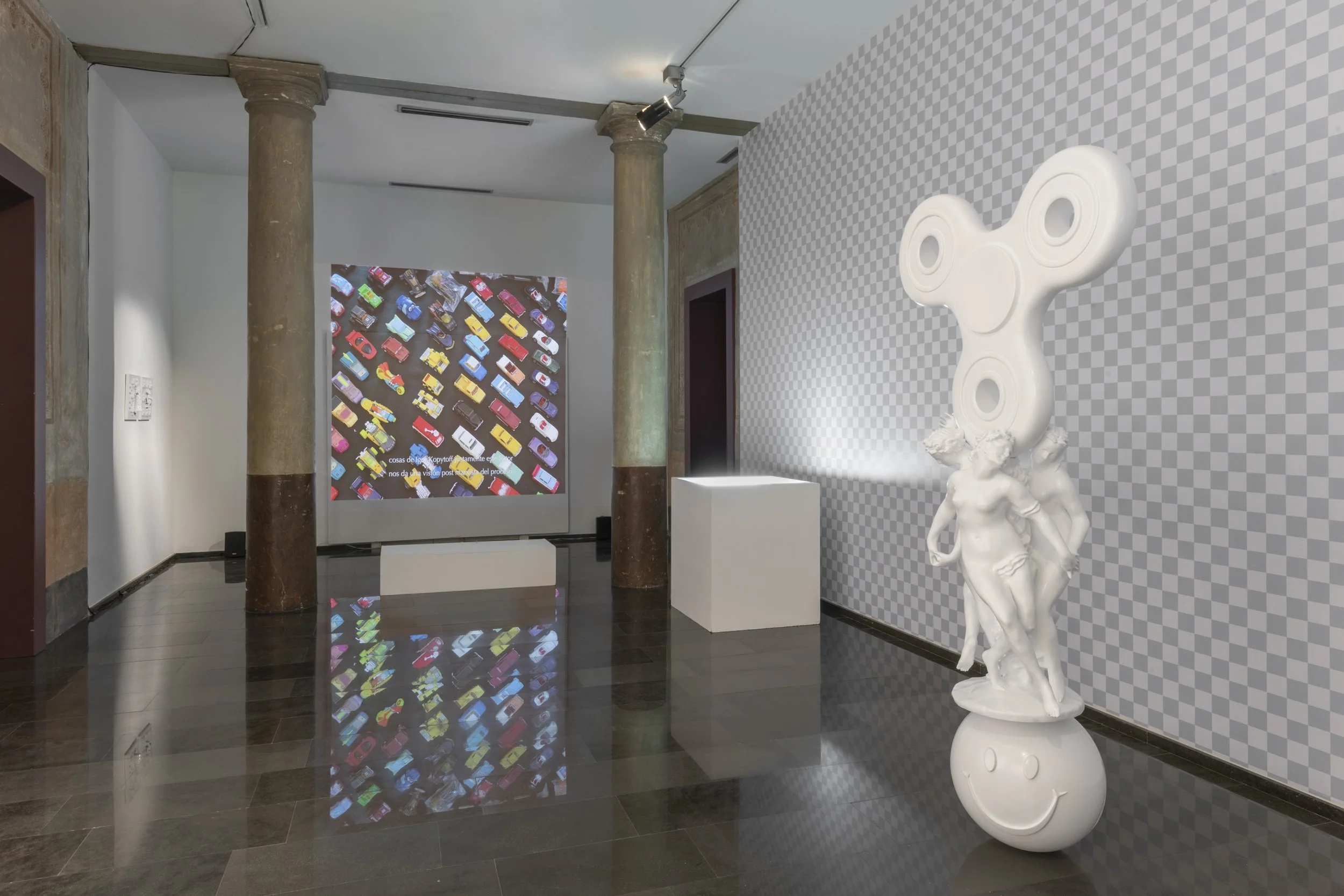
Mundane Arqueology. Gastón Lisak | Centre d'Art Contemporarni LA SALA, Vilanova i la Geltru, Barcelona
Nov 2023 / Enero 2024
Gastón Lisak (born in Barcelona in 1989) has carved his path as an artist by delving into the social lives of abandoned and discarded objects, giving them a second life in flea markets. His first institutional exhibition, Mundane Archaeology, brings together an important body of work produced between 2018 and 2023. The exhibition revolves around a deep reflection on objects as entities with their own lives and "earthly souls," constantly transitioning and undergoing perpetual transformation.
Flea markets in various cities around the world serve as the starting point for his artistic practice and the primary setting for his works: from Els Encants in Barcelona, El Rastro in Madrid, Mercado Lagunilla in Mexico City, Mercado Franklin in Santiago de Chile, the souks of Marrakech, to Tel Aviv's Shuk Hapishpashim, among others. In these transient spaces, objects once cherished and then abandoned are revived as "commodities," with biographies shaped by intertwined economic, symbolic, and emotional values. These objects range from shoes and amulets to taxidermied animals, souvenirs, and even neoclassical statues in plaster or plastic. Under the watchful eye of the artist, a tireless and obsessive collector, these objects become part of his personal archive—a modern-day cabinet of wonders reminiscent of the 19th-century Wunderkammer—ushering us into the realm of speculative interpretation. Here, they undergo a series of formal processes that culminate in visually striking works infused with narrative depth.
Mundane Archaeology thus encompasses works in various media, from anachronistic collections of found objects vacuum-sealed in white vinyl (Archaeology of the Everyday) to elegant neoclassical sculptures intervened with various plastics (Sacred Plastic). The exhibition also includes old tapestries, whose decorative motifs are concealed under a dense layer of white acrylic (Normalization), and a series of nearly identical objects - despite being found in widely different corners of the world (Clones). Additionally, the exhibition unveils a new series by Lisak, Totems of Today, featuring totemic sculptures created through 3D printing. These sculptures blend forms from appropriated objects of diverse origins: ethnographic museums, street markets, and kitchen pantries, among other everyday spaces.
While Lisak draws inspiration from art history and artists who have worked with found objects - from Elsa von Freytag-Loringhoven to Marcel Duchamp and Man Ray, and contemporary artists like Georges Adéagbo, Miralda, and Carmen Calvo - his assemblages, transformations, and ready-mades offer something distinct. They aim to transcend material boundaries, positioning themselves in an ambiguous space between cultural critique and aesthetic metaphor.
Beyond critiquing contemporary hyperconsumption, Lisak emerges as an anthropologist of material culture, crafting speculative biographies of objects and providing a powerful allegory to understand our globalized society, its relationship with the past, and its visions for the future.
